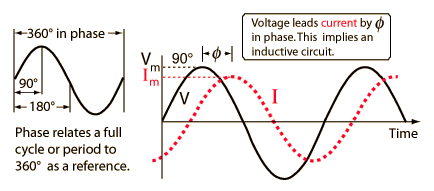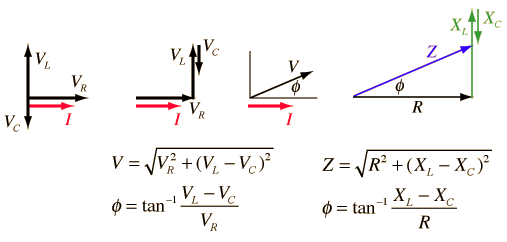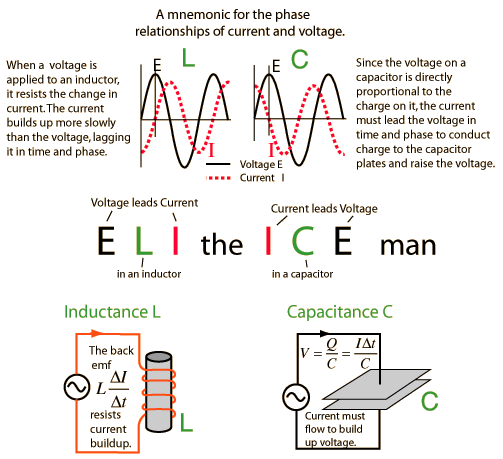Phase
When capacitors or inductors are involved in an AC circuit, the current and voltage do not peak at the same time. The fraction of a period difference between the peaks expressed in degrees is said to be the phase difference. The phase difference is <= 90 degrees. It is customary to use the angle by which the voltage leads the current. This leads to a positive phase for inductive circuits since current lags the voltage in an inductive circuit. The phase is negative for a capacitive circuit since the current leads the voltage. The useful mnemonic ELI the ICE man helps to remember the sign of the phase. The phase relation is often depicted graphically in a phasor diagram.

| Visualization of phase |
AC circuit concepts
| HyperPhysics***** Electricity and Magnetism | R Nave |

